

Max Davies
2026 Toyota HiAce review
2 Hours Ago
The Suzuki Ignis is still Australia's cheapest SUV despite price rises. But does it make sense in up-spec GLX guise?
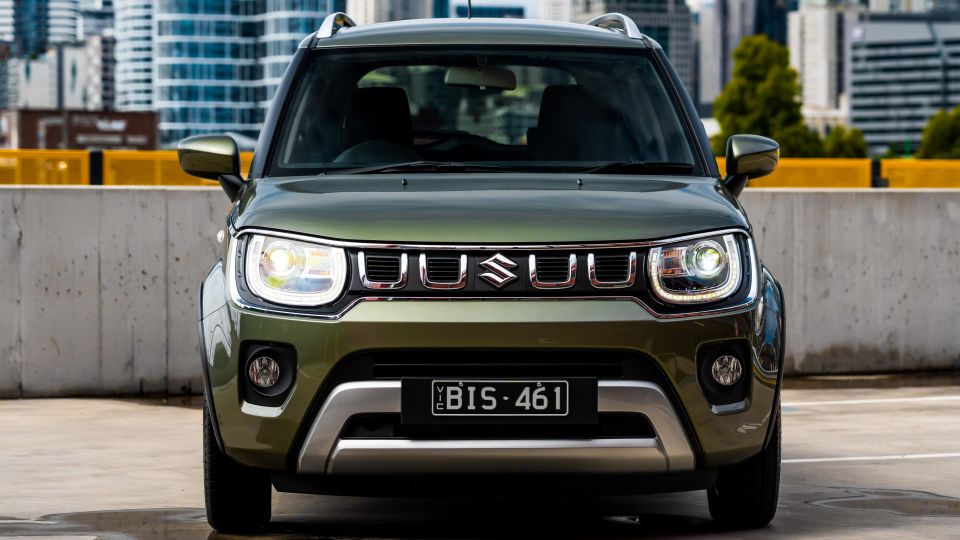
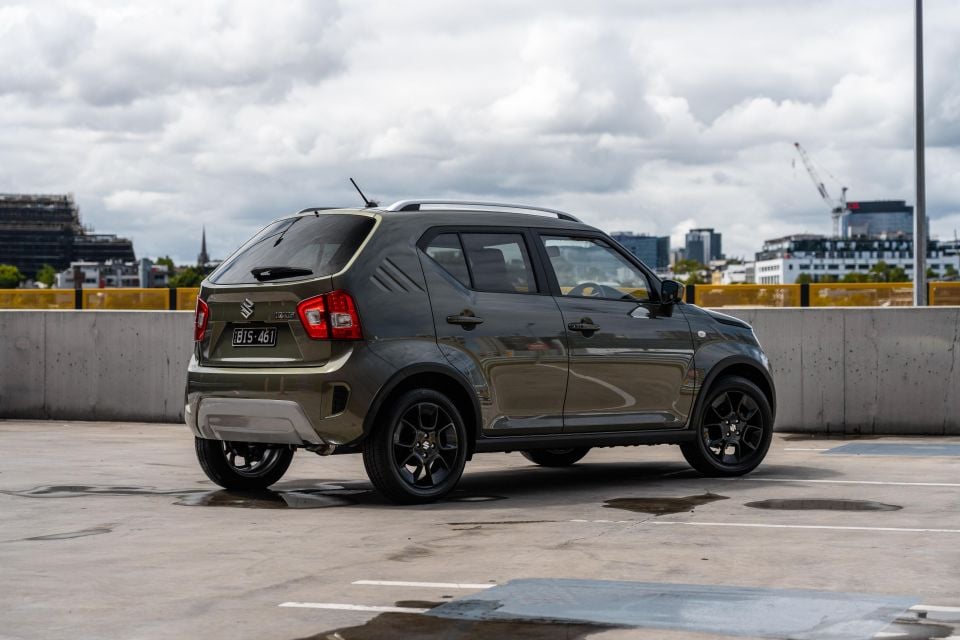

Quickly see how this car stacks up against its competition. Select any benchmark to see more details.
Where expert car reviews meet expert car buying – CarExpert gives you trusted advice, personalised service and real savings on your next new car.
I used to find the funniest joke to be “the Suzuki Ignis is an SUV”. If this tallboy hatchback is an SUV, then so is my dining table!

Scratch a little closer, however, and you’ll find the Ignis has as much right to the SUV title as something like a Kia Stonic or a Mazda CX-3.
Surprisingly, it has a claimed 180mm of ground clearance, more than something like a Kia Stonic (165mm) and even the old Ignis of the 2000s which arguably had more of an SUV look to it.
The titchy Ignis offers surprising space for its minuscule footprint, so at least the “U” in that increasingly meaningless acronym is reflected.
The Ignis actually holds the title of Australia’s cheapest SUV. But it’s quite a bit smaller than the next cheapest, the Hyundai Venue, and is therefore more of a rival for something like a Kia Picanto. That makes the Ignis’s value proposition appear a little shakier, and that is especially so for the flagship GLX we have on test.

The Ignis has been around since 2016 in its current generation but its styling still looks fresh and funky. The Ignis’s design pays homage to 1970s Suzukis like the Cervo and Fronte, to great success.
It’s hard to style a tall box, but Suzuki’s designers have nailed it.
When Suzuki taps into that retro vein, like it has done with the latest Jimny and the Japanese-market Lapin and Alto, it produces memorable designs. More overtly Europe-focused models like the Swift and S-Cross, in contrast, look very conservative.
The Ignis range opens at $23,490 drive-away for the GL manual, with an automatic transmission a $1000 option.
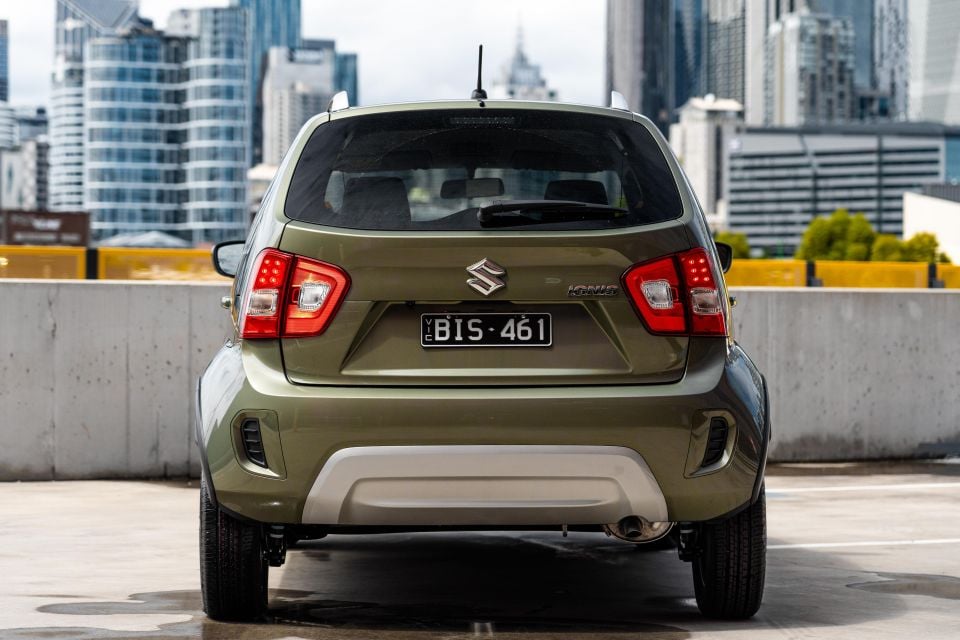
The auto-only GLX we tested is priced from $26,490 drive-away, with premium paint – like our tester’s distinctive Khaki Pearl Metallic – an extra $595.
That’s a steep price for something this small with these outputs, and Suzuki has even released a more expensive Shadow variant for $27,990 drive-away. Effectively a sticker pack, the Shadow makes the GLX look like better value, but then you put the mid-spec Suzuki up against similarly priced cars and that feeling quickly dissipates.
It’s scarcely larger than a Kia Picanto, which tops out at $22,890 drive-away. It’s also smaller in almost every dimension than an MG 3, which tops out at $20,990 drive-away. But Suzuki calls the Ignis an SUV, so let’s put it up against some SUVs.
A Kia Stonic Sport auto costs $26,790 before on-roads or $28,490 drive-away, while a base Hyundai Venue auto is $23,900 before on-roads or $27,190 drive-away based on a Sydney postcode. The even larger Mitsubishi ASX GS auto rings up at $26,240 list, and is currently being offered for $27,990 drive-away in NSW.
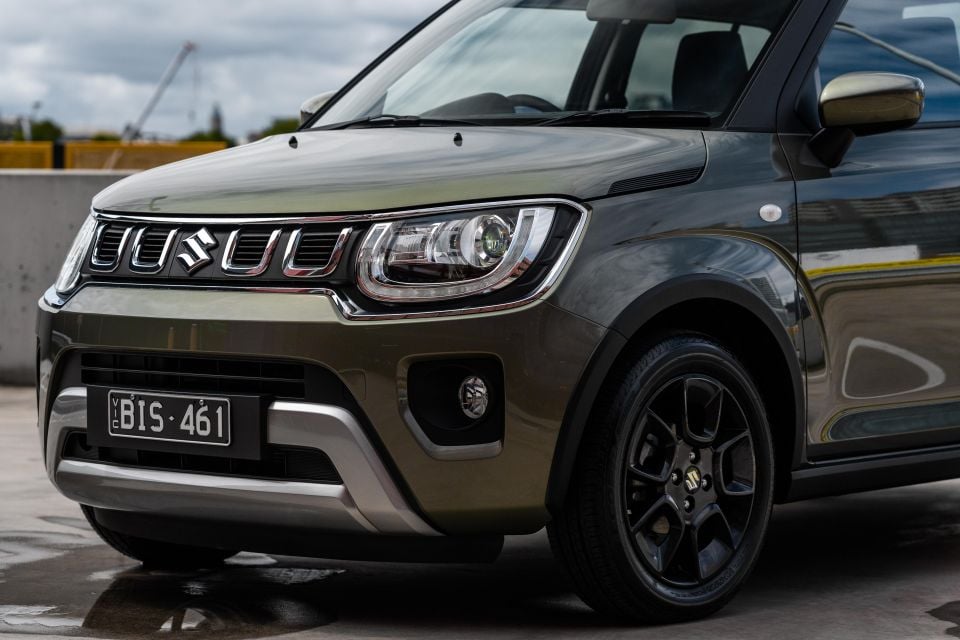
Yes, the Ignis undercuts Australia’s best-selling light SUV, with the Mazda CX-3 Neo Sport auto priced at $25,510 before on-roads or $29,389 drive-away in Sydney. But perhaps the greatest threat to the Ignis, not to mention these other budget SUVs, comes from China.
An MG ZS Excite is just $23,990 drive-away, while the fresher ZST Core – with a full suite of active safety equipment that the Suzuki can’t match – is a sharp $26,990 drive-away. It’s now wonder, then, why the MG ZS family is Australia’s best-selling small SUV.
After its launch, the Ignis’ price remained steady and then shot up during the COVID era. The GLX once retailed for $18,990 before on-road costs, a price point that feels much more appropriate.
Our Sold Price Report data shows this isn’t a vehicle that’s being heavily discounted, either.
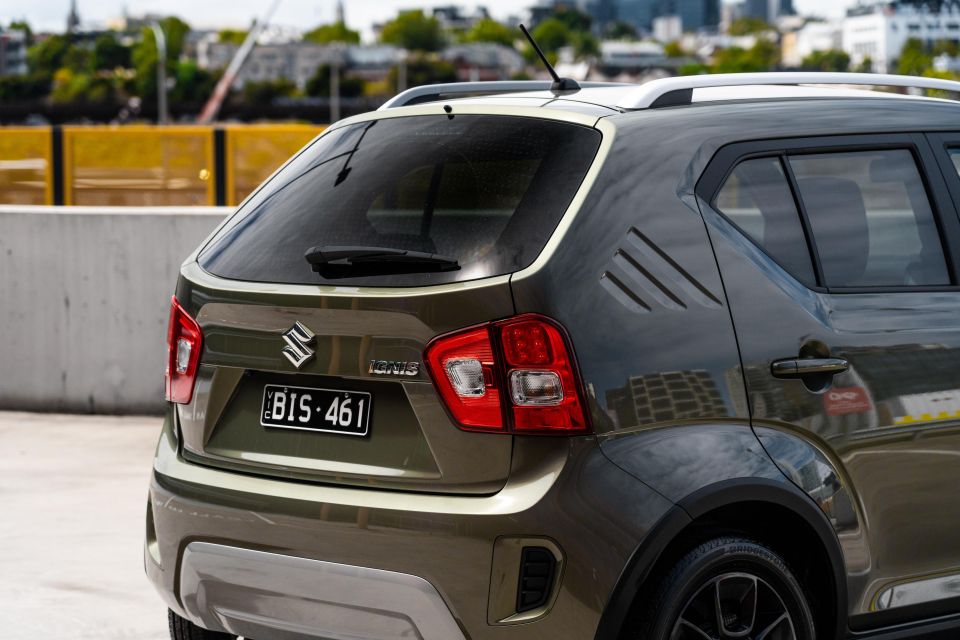
Suzuki isn’t alone in increasing prices, and many manufacturers have cited increasing material and shipping costs as the reason for their hikes – even the cut-price Chinese have upped theirs.
But for the Ignis GLX’s price to have climbed by almost 30 per cent – outpacing inflation – in such a price-sensitive segment is disheartening.
Buy your new car without the stress. It's fast, simple and completely free.

Great service from Travis and team, second time I have used this business would not hesitate to recommend them to anyone
Craig C.
Purchased a Ford Ranger in Sunshine Coast, QLD
CarExpert helped Craig save thousands on his Ford Ranger, now let us save you on your next new car.
Find a dealIt might not be a kei car, but the Ignis is one of the smallest vehicles on sale in Australia.
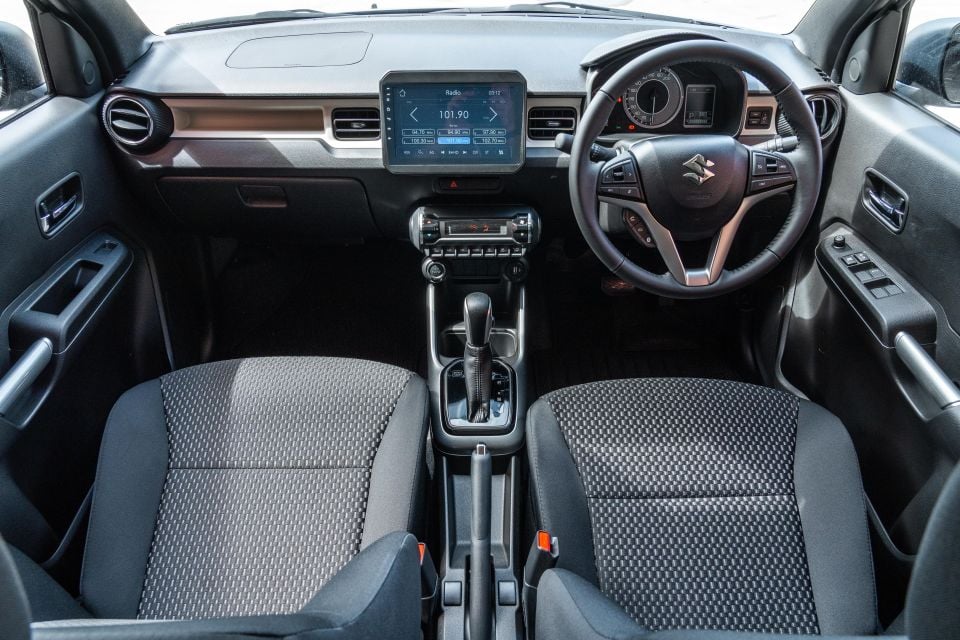
You’d be forgiven, then, for thinking it would be a tight squeeze inside. And yet Suzuki, a kei car specialist in Japan, appears to have used some of these learnings to eke out the maximum interior room possible from the Ignis’ titchy footprint.
The boxy body affords superb headroom both front and rear, where two adult males were able to sit behind two other adult males, all around 175 to 185cm in height, with sufficient leg room and knee room.
The GLX seats only two in the rear, unlike the base GL, but given how narrow the Ignis is we wouldn’t want to try and squeeze someone into a centre seat.
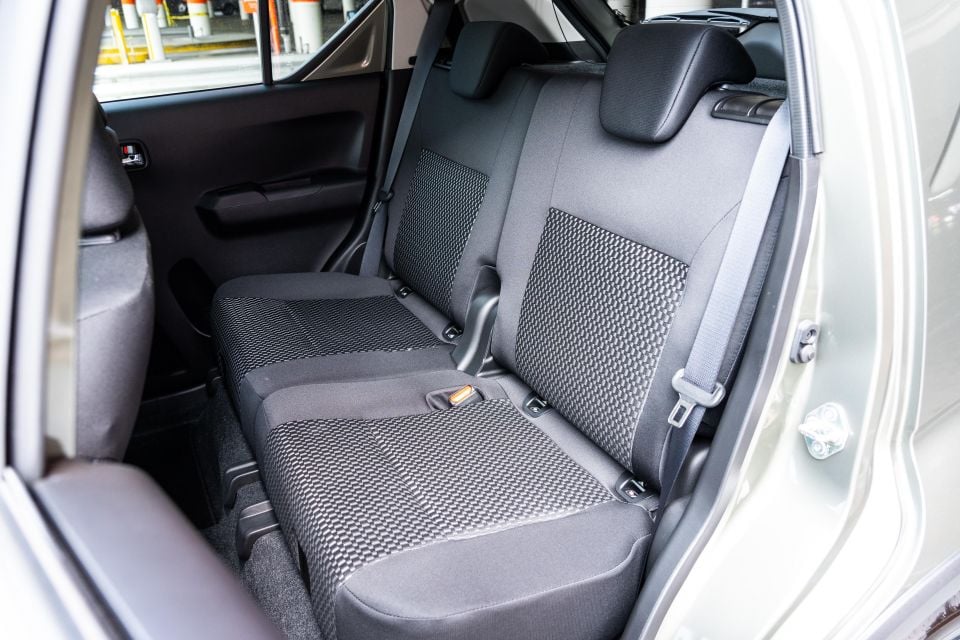

The rear doors open 90 degrees, making ingress easy for occupants in the back. The raked C-pillar treatment does eat into their view but this is still quite an airy cabin with a fairly large window at the rear.
You won’t find much in the way of amenities in the rear though – there are no air vents or USB outlets.
The rear seats don’t fold flat, but you can expand the 264L of luggage space to 516L with them dropped. That figure is measured to the window line, while Suzuki quotes a figure of 1104L measured to the roof.
The belt line is slightly high but I could still rest my arm on the door card up front, though it’s much too slim for it to be comfortable – again, Suzuki has tried to squeeze out every last bit of space it could.
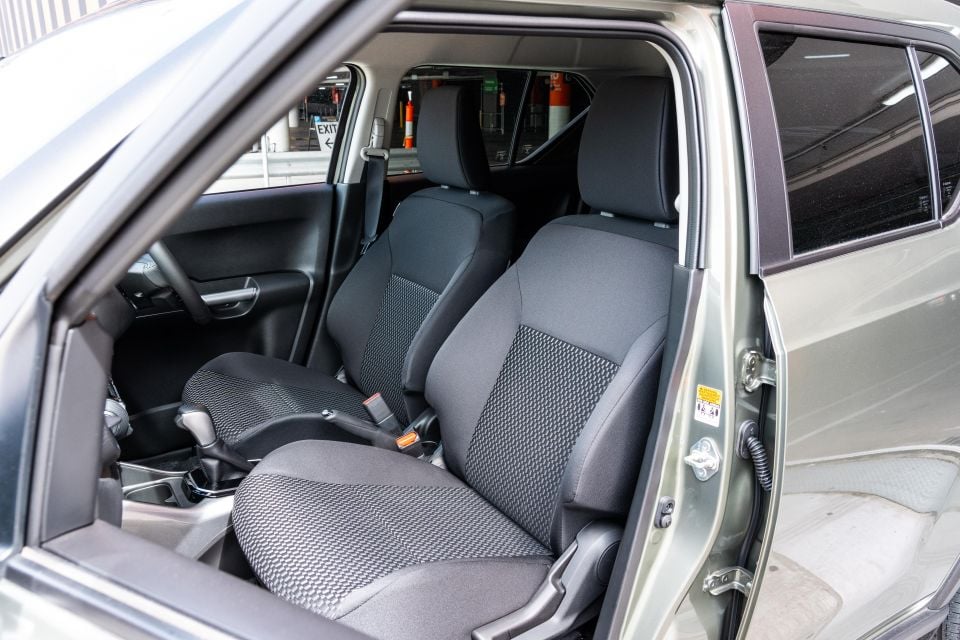
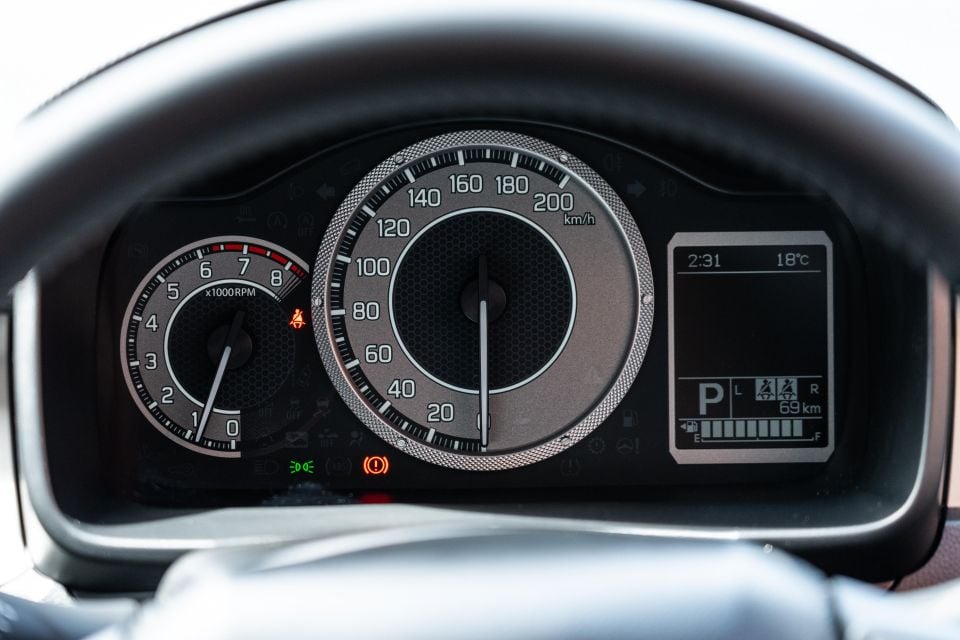
You peer out over a stubby bonnet and grip a leather-wrapped steering wheel, about the only soft surface in the interior besides the cloth-upholstered seats.
The Ignis’ interior is clearly built to a price, but Suzuki has tried to give it some style as it did with the exterior.
There are round air vents, an inset piece of contrast white trim running across the dash, and a rounded climate control unit that looks like a nerve gas canister out of a movie.
The interior is awash in hard, scratchy plastics, and the material on the doors had already attracted scuffs.

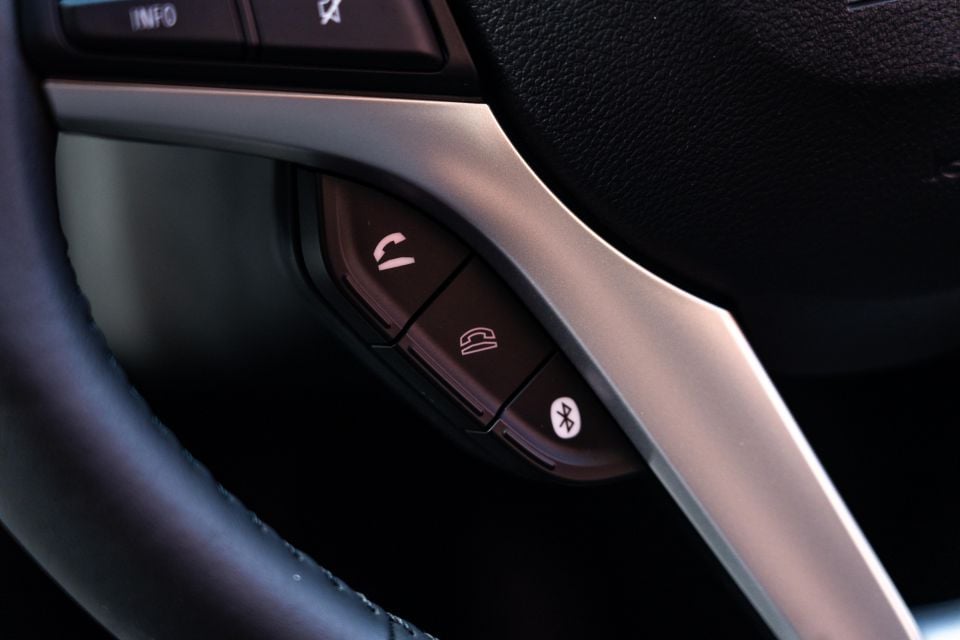
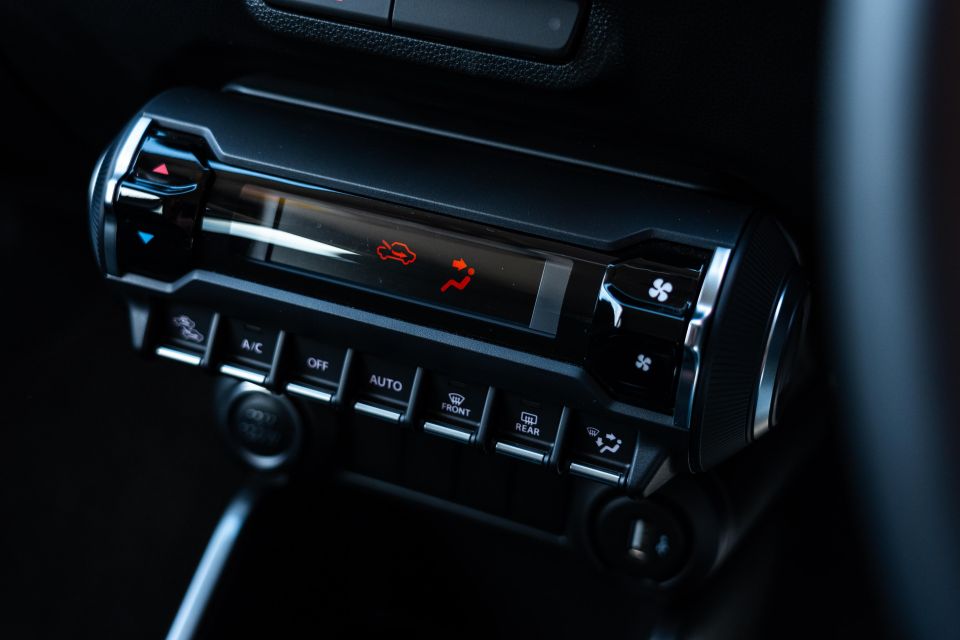
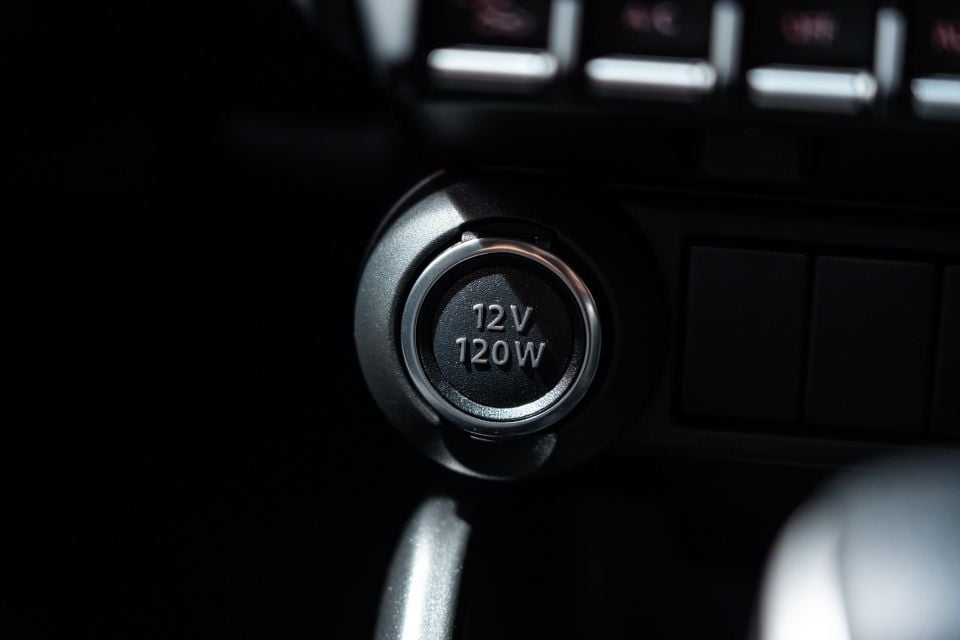
The dashboard is also such cheap plastic it actually bows down when you press it – something we’ve also observed in the Hyundai Venue – and you can shake the binnacle cover, which makes it feel as though you could rip it off without breaking a sweat. The headliner also feels like cardboard.
However, the quirky styling details stop it from looking cheap and cheerless. There were also no untoward rattles or squeaks, suggesting pretty sturdy construction.
Despite this being the top-spec Ignis, there’s no centre console bin with a padded lid suitable for use as an armrest. There’s also no proper dead pedal for the driver.
Even more puzzling is the raft of button blanks found throughout the cabin. We counted over half a dozen, including one on the steering wheel. This is puzzling for a top-of-the-line vehicle.

The cloth seats have a material that appears hard-wearing, though the construction of the pews themselves is dubious – they feel cheap and thin, again likely a conceit to maximise cabin space, while you can feel the internal metal frame if you press them from behind.
Though it lacks a centre console bin, storage is otherwise quite good. The bottle holders in the doors can fit even larger bottles, such as your typical gym shaker cup, while there’s a shelf at the base of the centre stack large enough to fit a phone.
There is also a pair of cupholders for front-seat occupants and one further back for the rear occupants, as well as a smartly sized glove compartment with a shelf.
A pair of dials sit to the left of a simple instrument cluster screen, which can be adjusted either using buttons on the dashboard or on the steering wheel. The cluster is neat and legible.
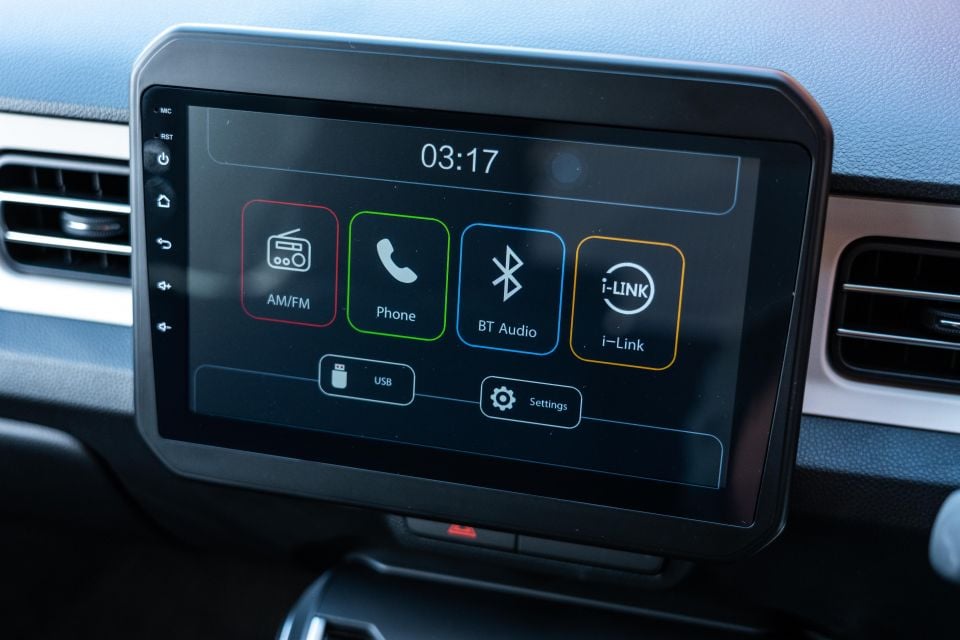
Our tester was fitted with an aftermarket 9.0-inch screen, part of a program employed by Suzuki Australia to get as many vehicles in Australia as possible at a time when supply shortages were biting and stocks of the factory 7.0-inch screen were limited.
This program has now come to a close, which is good news for buyers. Despite the larger size, the 9.0-inch unit goes without embedded satellite navigation. With its poor resolution, it feels like you’re looking at it through polarised sunglasses and overall it looks like a cheap tablet you buy for your kids and don’t care if they break. It’s laggy, too.
One positive of this unit is the surprisingly decent resolution of the reversing camera display.
Powering the Ignis range is a 1.2-litre naturally aspirated four-cylinder producing 66kW of power and 120Nm of torque.

This is sent to the front wheels exclusively through a choice of a five-speed manual or a continuously-variable transmission (CVT) in the GL, though the GLX is CVT-only.
That’s down on rivals like the Venue (90kW/151Nm) and CX-3 (110kW/195Nm), though the gulf between the Ignis and the Stonic isn’t as wide (74kW/133Nm).
The Ignis also edges out these other light SUVs in fuel economy. Over a mix of inner-city, suburban and highway driving, we averaged 5.7L/100km. Over the course of a week, we saw 6L/100km. The official combined cycle claim is 4.9L/100km.
On paper, the idea of a small naturally-aspirated engine mated with a CVT sounds thoroughly underwhelming. But the Ignis weighs just 865kg, so it feels light on its feet.
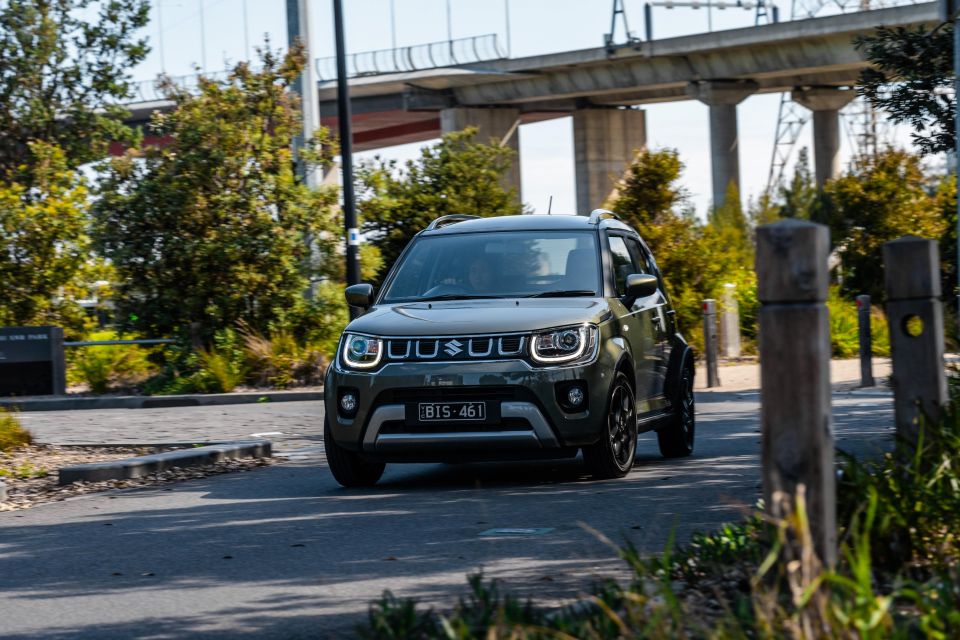
Where expert car reviews meet expert car buying – CarExpert gives you trusted advice, personalised service and real savings on your next new car.
The Ignis’ atmo 1.2-litre is willing, and the CVT helps it feel quite zippy around town. You can dart between lanes without it always feeling like a white-knuckle, foot-to-the-floor experience. This might just be the ideal application for a CVT.
Mind you, it takes around 12 seconds to get up to 100km/h from a standstill, and from a standing start it certainly feels that quick – or, rather, not so quick. With four adults on board, the Ignis’s little engine feels strained.
The engine has a bit of a raspy sound, but there’s not too much in the way of annoying rev flaring from the CVT. Speaking of the transmission, there’s no manual shift mode but there’s a Low mode which you may accidentally knock the car into when you’re just trying to push the shifter into Drive.
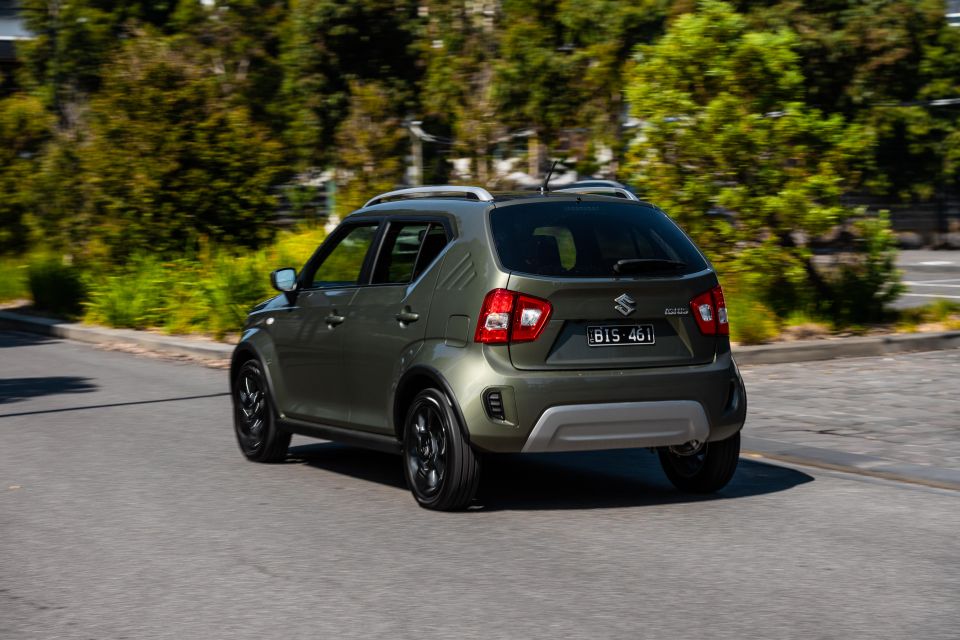
Once at highway speeds, the Ignis performs competently until you encounter a strong crosswind, when it starts to feel a little battered. On the open road, the cabin also gets quite boomy and doesn’t seem particularly well insulated. The Ignis’s engine plods along at 2000rpm at 100km/h without too much complaint, mind you.
The ground clearance may best some other light SUVs on paper, but the Ignis feels overwhelmed by some car parks and practically bottomed out at one T-junction with a gutter. It did feel okay over some unsealed roads, though.
Like most SUVs at this end of the market it’s only available with front-wheel drive in Australia, but it can be had with Suzuki’s AllGrip all-wheel drive system overseas.
The ride quality is mostly good, avoiding feeling too unsettled. Mind you, it does get disturbed by some surface changes, but then this is a very small car with a short wheelbase.

It’s not quite as enjoyable as a Swift in the corners, as it feels a bit top-heavy. The brake pedal feels a bit spongy, too.
If you’re coming out of an older vehicle, you’re not going to be intimidated too much by the Ignis. There’s no lane-keep assist tugging at the wheel, nor forward collision warning to alert you to an imminent collision.
The old-school feel extends to the steering, which feels heavier than that in a Kia Picanto or Rio, and doesn’t seem to lighten up at low speeds. It’s not arduous to drive, mind you – it’s not like you’re driving an old Swift Cino without power steering, if that’s what you’re thinking. The elevated seating position also makes you feel less exposed.
It does feel refreshing driving something so simple, though we’d still rather have more standard safety technology than a back-to-basics driving experience.
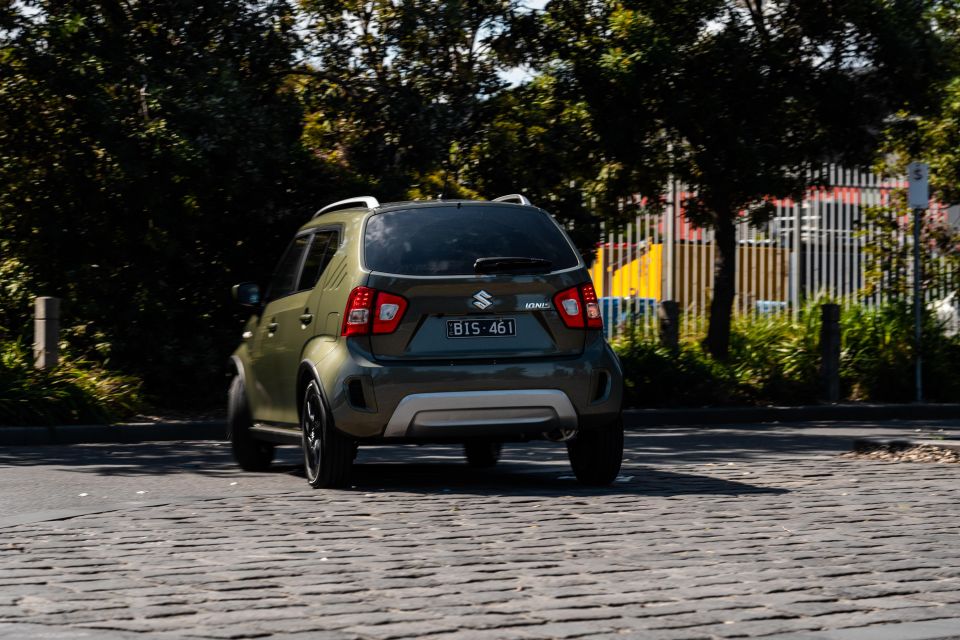
The old-school feel extends to the instrument cluster, which frustratingly goes without a digital speedometer. The instruments are neat and legible, however.
The Ignis is scarcely larger than a Picanto, so parking is a doddle. I felt like a true Melbourne hipster snagging a tiny spot right in front of a coffee shop where we were buying beans. You’ll have no problem parking this anywhere.
We miss out on various features offered in markets like Europe, such as autonomous emergency braking, lane departure warning, paddle shifters, a 48V mild-hybrid system, and all-wheel drive.
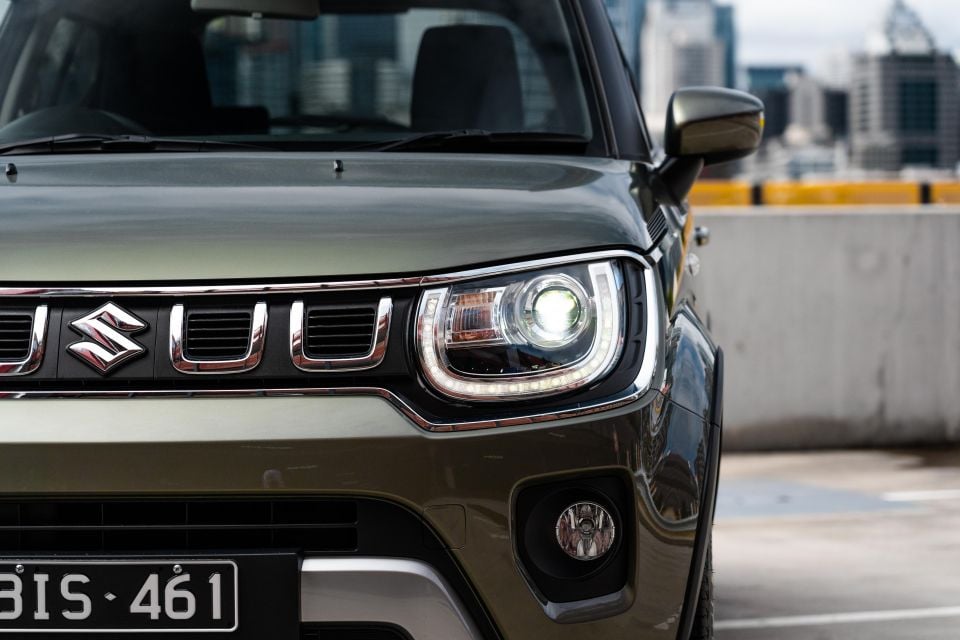

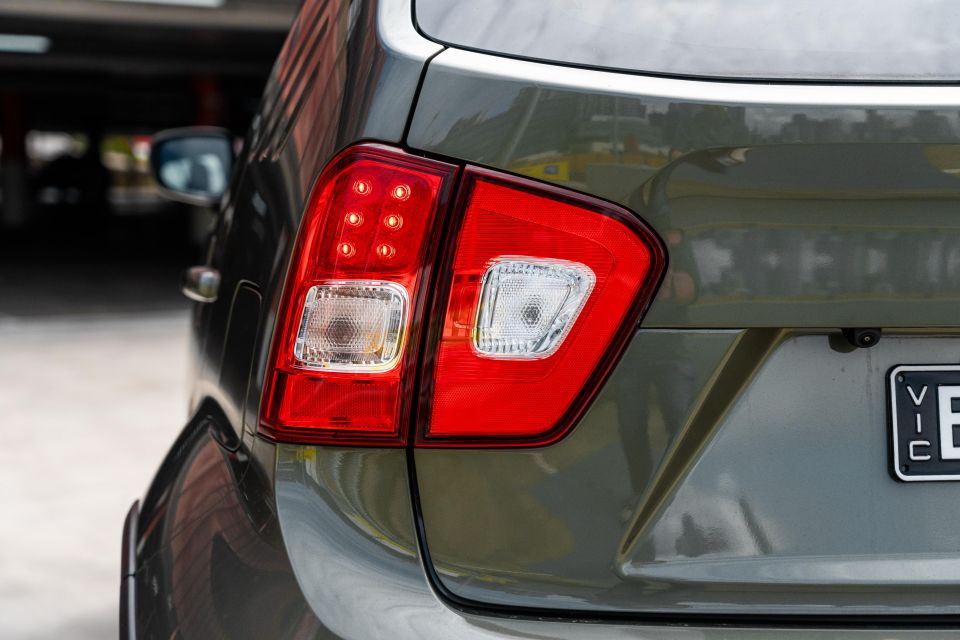
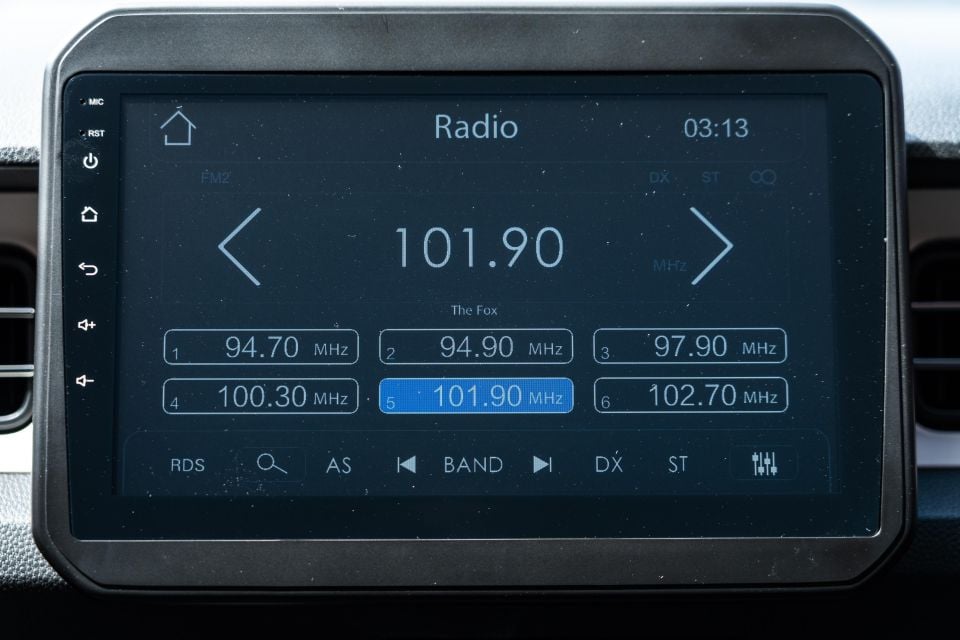
The Ignis GLX swaps the base GL’s 15-inch steel wheels and halogen headlights for 16-inch alloys and automatic LED headlights, and gains a couple of extra speakers for its sound system (for a total of six).
You do, however, lose a fifth seat: the GLX is strictly a four-seater, and the rear seats therefore fold 50/50 instead of 60/40. The rear seats also slide and recline.
It also comes standard with the following equipment:
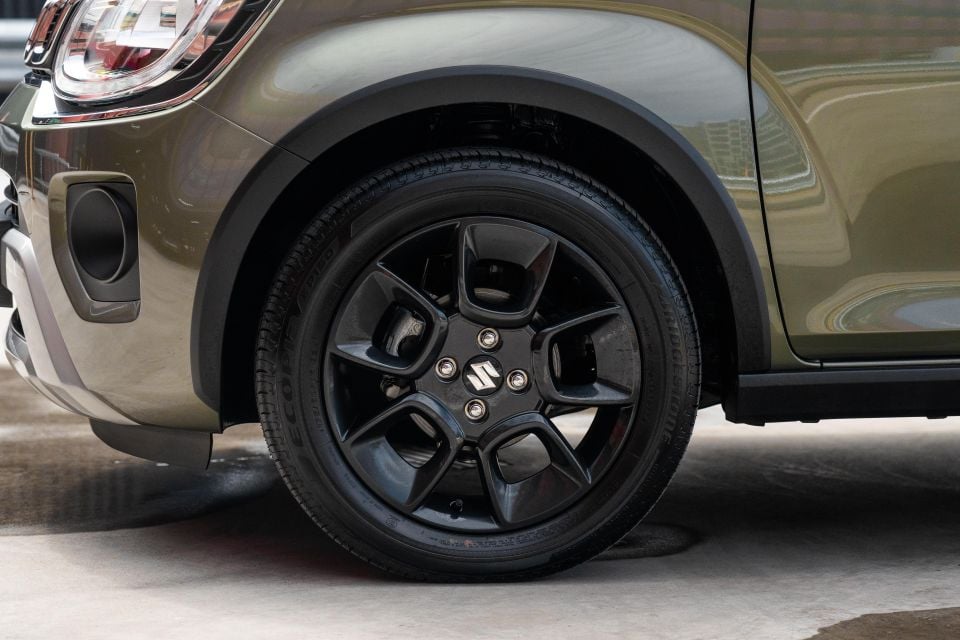

That’s over and above what the base GL offers:
As mentioned, there’s no autonomous emergency braking – something offered on every Picanto, Venue, Stonic, ASX and CX-3 – and nothing in the way of active safety technology.
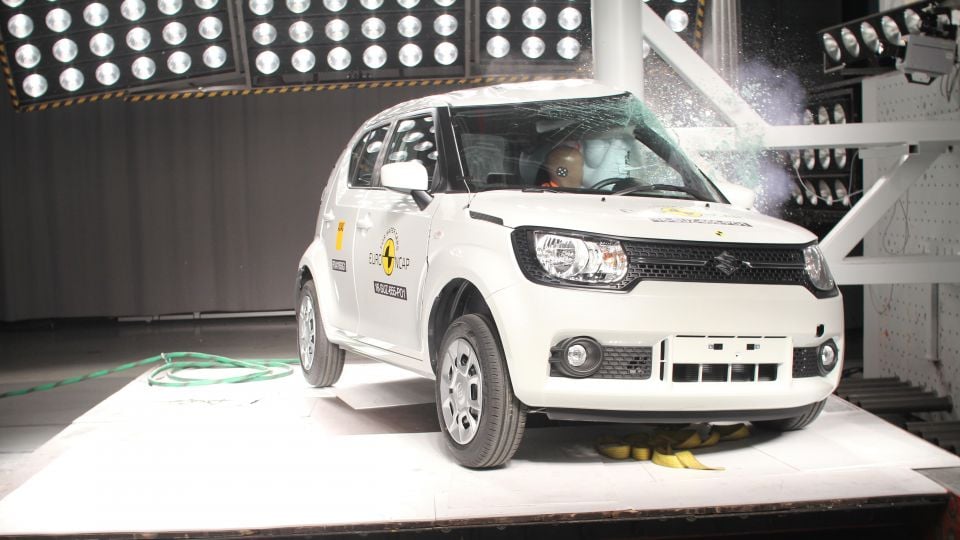
AEB will be mandated for all newly introduced models in Australia from March 2023 and all models on sale in Australia from March 2025.
The Ignis remains untested by ANCAP, though the European-market model received a three-star safety rating in 2016 which has since expired.
In Euro NCAP testing, the Ignis scored 79 per cent for adult occupant protection, 79 per cent for child occupant protection, 67 per cent for pedestrian detection and 25 per cent for safety assist.
Standard safety features include:
The Ignis is covered by a five-year, unlimited-kilometre warranty with five years of capped-price servicing.

The service intervals are every 12 months or 15,000km, whichever occurs first, and are capped at the following:
| Interval | Service price |
|---|---|
| 12 months/15,000km | $319 |
| 24 months/30,000km | $429 |
| 36 months/45,000km | $409 |
| 48 months/60,000km | $449 |
| 60 months/75,000km | $349 |
That works out to be $1955 over the course of five years or 75,000km, making it one of the pricier cars at this end of the market to service.
For context, it costs more than a Kia Picanto 1.2L ($1925) or Hyundai Venue ($1575) to service if slightly less than a Kia Stonic 1.4L ($1979).
It’s a tough pill to swallow for this once sub-$20,000 vehicle to be priced the way it is today.
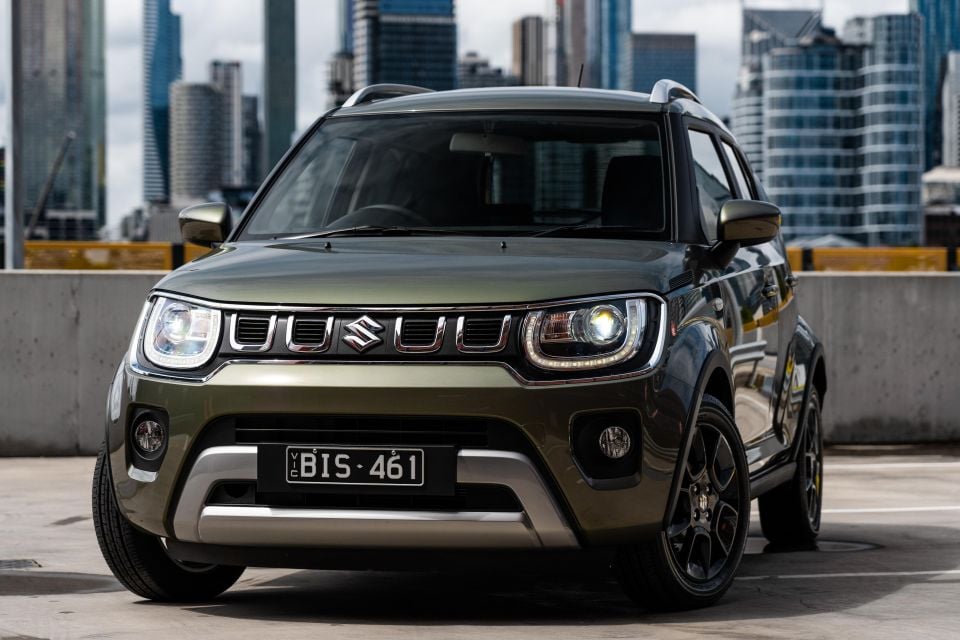
The Ignis’s styling is no less funky nor its packaging no less impressive than when it first launched around seven years ago. And of course, Suzuki isn’t the only brand to have increased prices.
But a lot can change over this time beyond a recommended retail price. The level of standard safety equipment on even the most affordable cars in Australia has risen for the most part, MG 3 and Ignis aside.
The lack of even autonomous emergency braking is deeply disappointing when it’s available overseas, and considering just a few hundred dollars more gets you a MG ZST or Mazda 2 with a full suite of safety tech. The Ignis’s powertrain is willing, but a price in the mid-$20k range for something with an atmo 1.2-litre is also a tough sell.
If you don’t want the last word in performance or safety, the Ignis has plenty of charm. It’s a genuinely distinctive little tallboy hatch – ah, sorry, SUV.

Click the images for the full gallery
MORE: Everything Suzuki Ignis
Where expert car reviews meet expert car buying – CarExpert gives you trusted advice, personalised service and real savings on your next new car.
William Stopford is an automotive journalist with a passion for mainstream cars, automotive history and overseas auto markets.


Max Davies
2 Hours Ago


William Stopford
18 Hours Ago


Ben Zachariah
19 Hours Ago


Derek Fung
20 Hours Ago


Matt Campbell
1 Day Ago


William Stopford
2 Days Ago